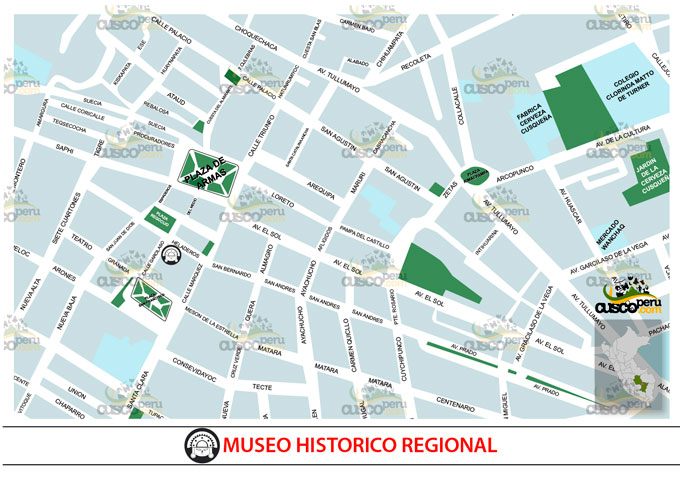Located in the colonial mansion of the illustrious Cusquenian writer and chronicler Garcilaso de la Vega Chimpuocllo, the building dates from the late sixteenth century and early seventeenth century and was inhabited by Garcilaso until 1560, when he left for Spain. It was built on the Inca terraces that formed the Cusipata Plaza. Regarding the building, the typology shows an influence of Andalusian civil building, developing from a central courtyard, a gallery of semicircular arches, stone balconies in the east bay and wood in the rest of the bays of the second level. It was intervened with restoration processes after the earthquakes of 1650, 1950 and 1986.


It offers visitors a beautiful collection of archaeological objects from pre-Inca and Inca cultures, as well as a select collection of colonial paintings that show us the success achieved by Cusquenian artists. The collections of pre-Hispanic archaeological cultural goods show the Andean cultural development, covering all the periods of the Andean civilization: Pre-ceramic, Formative Period or Early Horizon (Marcavalle and Chanapata), Middle Horizon (Wari), Late Intermediate (Killke and Lucre) and Late Horizon (Inca).
As for the Viceroyalty, Republican and contemporary collections, there are works of painting and sculpture of the so-called Cusco School, including those of Diego Quispe Tito, Pablo Chillitupa and El Maestro de Almudena. There are also remarkable sculptural works, among them five reliefs of the Italian Jesuit layman Bernardo Demócrito Bitti and the sculpture of a "Crucified Christ", which was present in the sentence and dismemberment of Tupaq Amaru II in the main square of Cusco.
Opening hours: Monday to Sunday from 08:00 to 18:00 hrs (no calendar holidays).
Cost: Entrance included in the Tourist Ticket.

Happy passengers